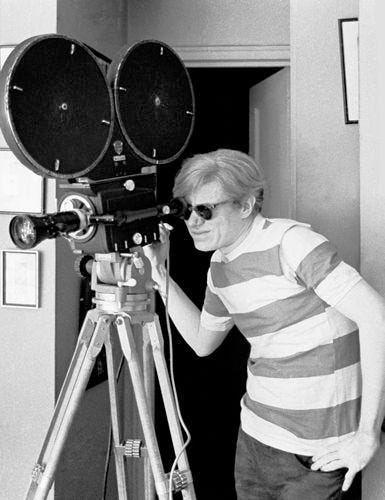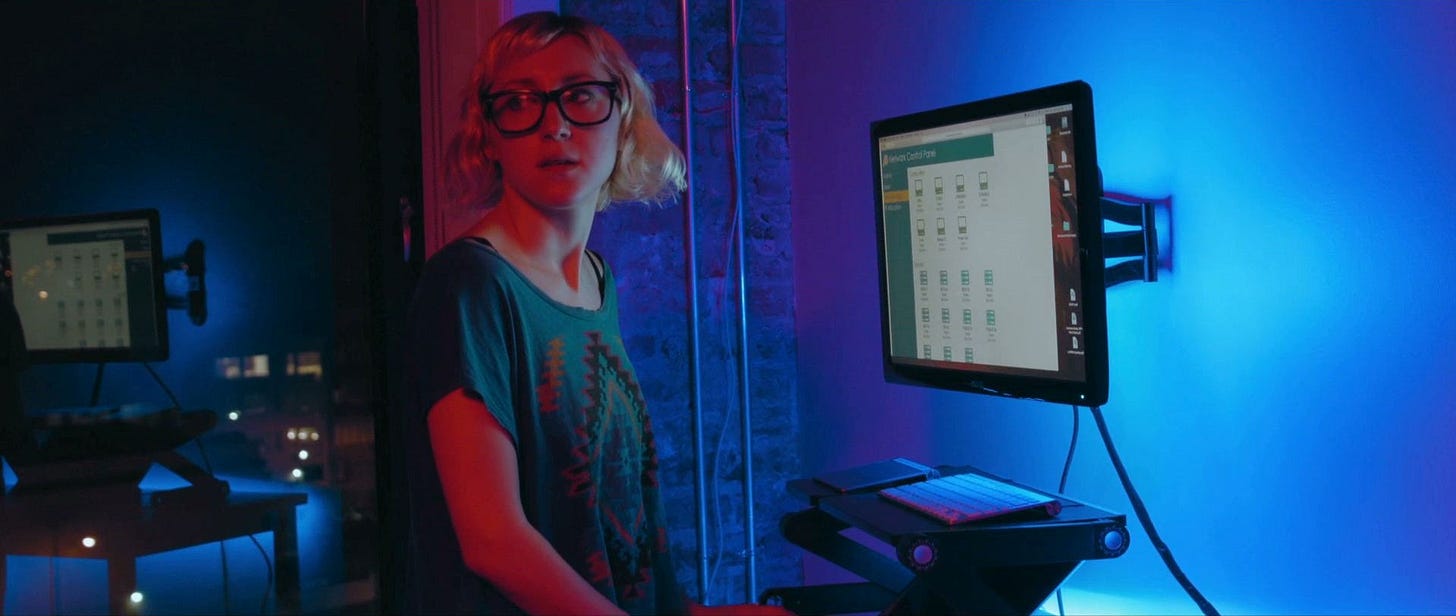People often talk about a director’s “vision,” but I have terrible eyesight. I know some people think they have bad eyesight, but I have terrible eyesight.
The first time I looked through the eyepiece of a real film camera in my cinematography class, I had to turn the diopter all the way in order to get the film plane in focus. When the professor checked my team’s shot later, he asked, “Hey, who’s playing around with the diopter?”
He didn’t believe me when I told him I really needed to adjust it that far. “Here, let me see your glasses.” He held them up to his eyes and blinked hard. “Wow, you really can’t see, can you?”
I have terrible eyesight.
Do You See What I See?
I’m also colorblind.1 I do like filming things in black-and-white (like this trailer for a play I shot, or my noir short film), because I feel like I have an advantage. I already have to interpret brightness and contrast to guess colors in my everyday life, so reversing that into a black-and-white movie comes naturally. I pretty much know what everyone’s costumes are going to look like.
The colorblindness can cause some problems, though. Other Halves had several scenes in a computer server room. In most movies, a location like that would be lit with a slightly blue tint, to give it a high-tech feel. I asked the DP to do something else, just so it wouldn’t look exactly the same as every other computer room we’ve seen in a million other movies.
“Like what?” he asked.
“I don’t know, whatever. Just something different.” I left to go talk with the actors, and about twenty minutes later, someone came to tell me the scene was lit.
When I came back, I was mad. It looked exactly the same; they hadn’t changed a thing. What were they doing for twenty minutes? Luckily, before I said anything, the producer happened to walk in right behind me. “Wow!” she said, “This looks great. I love what you did.”
“They didn’t do anything. It looks exactly the same.”
She looked at me like I was nuts. This is that set—
The rest of the night’s filming, everyone talked about how cool and unusual the set looked. Which it does, I think—
Color Correction
So you can imagine I was excited when I first heard about glasses that could (supposedly) correct color vision. The mechanism of correction didn’t make sense to me, but I decided to try them anyways.
The results were not impressive. It looked to me like I was just wearing regular sunglasses. I couldn’t suddenly distinguish red from green—which I verified by looking at red flowers on a green bush.
Now, the glasses manufacturers claim that the glasses sometimes don’t work for some people. So I guess I was just unlucky?
Here’s the thing—this was years ago. Pre-COVID. I have never, not once, seen someone wearing these colorblind glasses in real life. Colorblindness isn’t common, but it’s not that rare, around 4% of the population. You will never see me without my regular glasses; if these color correcting glasses actually worked, I’d figure out how to wear both pair at once.
That’s why I suspected these things were a scam—no one uses them in the real world. Turns out, I’m not the only one who was suspicious. YouTuber MegaLag did some serious research and confirmed my experience.
These videos are long, but very interesting. The saddest part is the way “influencers” knowingly scam their fans.
Man Without Fear
My wife is the only person I’ve met who isn’t technically blind but still has vision worse than mine. We happened to meet the year the original Daredevil came out. (Parts of which I had seen filmed in my neighborhood the year before.)
Naturally, the recent movie about the blind guy came up in conversation. In her New Zealand accent, the title character sounded like “Dae-dev-oh.” I made her say it a lot, because I thought it was cute.
Anyway, this funny video popped up in my feed, and seemed apropos.
Specifically red-green colorblind, which is the most common kind.










I don't know if they still do it anymore, but back in the day, Contract Services demanded that each of us in the IA (among the on-set crafts, anyway) show up every few years to prove our I-9 citizenship status -- as if I'd really sneak across the border to Mexico, Canada, or Belarus to renounce my American citizenship, then have second thoughts and hire someone to smuggle me back across the border where I somehow resumed my former life in the exact same apartment I had before... ahem, don't get me started on the idiocy of Contract Services. Anyway, once we'd confirmed our citizenship, we had to take a colorblind test. As a lighting guy, I could understand that much: with red, blue, green, black, and white power cables, each color-coded to make it easy to avoid creating a huge dead-short, we really needed to have decent color vision.
BTW -- "Other Halves" looked really good.